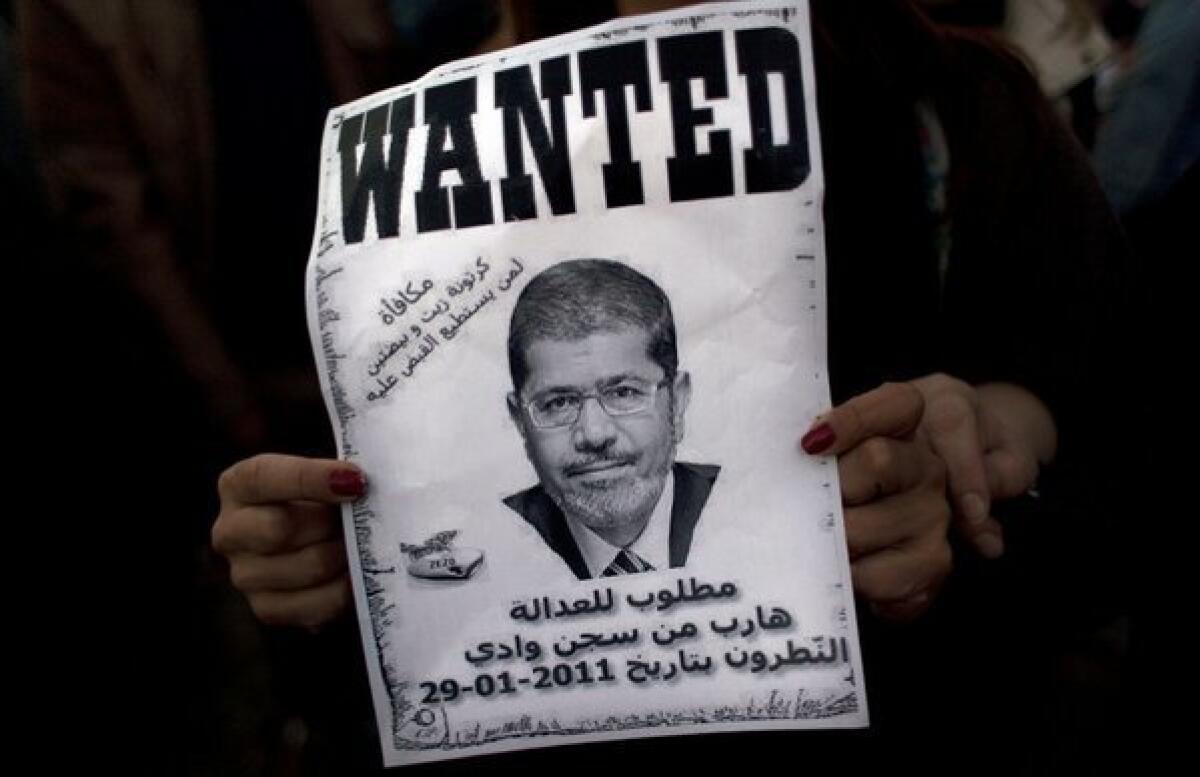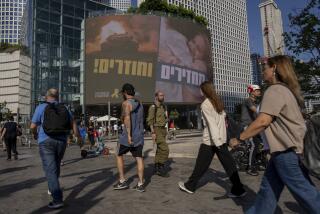After the Arab Spring

The most enduring image from my travels across the Middle East this year was a Libyan street lined with bridal boutiques. Mannequins in bouffant white dresses, with beaded bustiers and satin rosettes, evoked Cinderella transformed by her ball gown.
Outside, however, the street was lined with heaping piles of garbage wrapped in tatty plastic bags. Tripoli literally stank.
On the second anniversary of the Arab uprisings, millions across the Middle East still have dreams of makeovers. But revolutionary fairy tales have devolved into the reality of running countries that are still without fully functioning governments or basic laws. Providing fundamental public services, much less addressing economic woes that sparked the uprisings, is still a very long way off.
The old order has yet to be replaced by a new one.
âWe are a stateless society today,â lamented Prime Minister Mahmoud Jibril, a former rebel. âFor 42 years, Moammar Kadafi was the state. When he died, the state died too.â In July, Jibrilâs coalition won the largest block of seats in the new national assembly. âWeâre starting from scratch,â he told me last month.
Phase two of the Arab Spring is proving far harder than the first phase, as has become painfully evident in Egyptâs turmoil. Despite a theoretical embrace of democracy, factions fear each other in practice. The latest flash point is the countryâs draft constitution, scheduled for a vote this week.
âI suffer from polarization in my own family,â a senior Egyptian official told me. âTwo of my kids blame me and [President Mohamed] Morsi for all Egyptâs problems. They say youâre robbing me of my future.â
Egypt is consumed with a democracy of distrust. Young revolutionaries resent that the Muslim Brotherhood has been the primary beneficiary of an uprising it did not spark. The Morsi government made a power grab last month out of fear that a deep state cabal from the ancien regime was plotting to undo it. Secular and liberal activists suspect that the two religious parties, which won more than 70% of the seats in a parliament since disbanded by the courts, are scheming to create an Islamic state.
And, in the ultimate irony, the Islamist parties arenât crazy about each other either. The Brotherhood views the ultraconservative Salafis as backward and naive. Salafis criticize the Brotherhood for compromising the Islamist code.
Variations of the same issues are visible throughout the region.
In the spring, I went to Sidi Bouzid, where a young Tunisian fruit vendor triggered the Arab uprisings by setting himself on fire on Dec. 17, 2010, to protest government corruption and abuse. I asked other fruit vendors on his old corner what the Jasmine Revolution had done for them.
They had far more freedom, they said, but far fewer jobs. Nationwide employment was about 17%, but 40% among the young. By the fall, when I returned to Tunisia, new graffiti blasted the new government.
Emboldened and ambitious Salafis, who have entered politics after 14 centuries of rejecting participation, also now seek to re-create life as practiced by early Muslims, a central tenet of Al Qaedaâs ideology. Many but not all reject violence.
During my visit, six weeks after a Sept. 14 attack by Salafi radicals, the large windows at the U.S. Embassy in Tunis were still blackened and broken. Bulletproof glass at the entry was shattered and warped.
Among Mideast countries in transition, Libya has the most going for it, with vast resources and a small population. Oil production is back to about 90%.
Yet for six days in October, water sellers set up stands all over the capital because the city of 2.2 million was bone dry, and no one seemed to know how to fix broken pipes and pumps.
It wasnât entirely the fault of the countryâs new leaders. After international sanctions were lifted in 2008, Kadafi initiated huge construction projects with foreign companies without provisions for maintenance.
Revolutionary rivalries, spurred by democratic openings, have intensified the trauma of transition in Libya. One basic clash is over who is a real revolutionary â and not a âpost-revolution revolutionaryâ cashing in politically or financially after the fact.
In recent months, the Warriors Commission has registered 240,000 men from 300 militias. âSome pretend they were revolutionaries,â commission spokesman Abdel Rahman Mansouri told me. âSo we ask for proof. Some lie. Some fail. Some are pro-Kadafi.â Cellphone combat videos â I saw many, most of them quite bloody â are a hot item to prove bona fides.
Only a fraction probably fought, officials said. So not all may win benefits, which could have an impact on both politics and national security.
âThere are at least four guns for every man, woman and child in Libya,â former Deputy Prime Minister Mustafa Abushagur told me.
Libya is far from lost, however. Like the bridal shop, some images reflected hope about the future â even around Bab Azizia, the sprawling fortress where I first interviewed Kadafi in 1980. He had received visitors in a hokey tent of colorful quilts inside the compoundâs concrete walls.
Pummeled by NATO warplanes and finished off by rebels, Bab Azizia is now a pile of rubble. But across the street is a more than 500-yard wall divvied into billboard-size sections. For the revolutionâs first anniversary in October, young artists, including teenage girls, painted their visions of a new Libya. Several featured promising symbols such as scales of justice or white doves.
In a country long associated with extremism, terrorism and the Mideastâs most radical factions, the most eye-catching sign was emblazoned with a single word in big bright colors: Peace.
Robin Wright, a joint fellow at the U.S. Institute of Peace and the Woodrow Wilson Center, is the author of âRock the Casbah: Rage and Rebellion across the Islamic World.â
More to Read
A cure for the common opinion
Get thought-provoking perspectives with our weekly newsletter.
You may occasionally receive promotional content from the Los Angeles Times.










